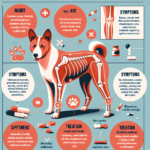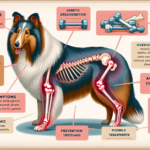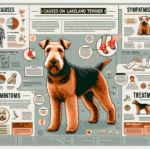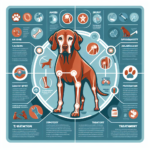Golden Retriever Joint Pain: Causes, Symptoms, Prevention, and Treatment
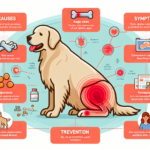
Introduction
Golden Retrievers are one of the most beloved dog breeds worldwide, known for their friendly disposition, intelligence, and versatility. Originating from Scotland in the mid-19th century, Golden Retrievers were initially bred for hunting and retrieving game. Their keen sense of smell, coupled with their gentle mouth, made them excellent hunting companions. Over the years, they have also become popular as family pets, therapy dogs, and service animals due to their trainability and affectionate nature.
Despite their many positive attributes, Golden Retrievers are prone to several health issues, with joint pain being a significant concern. Joint health is crucial for this breed, given their active lifestyle and genetic predisposition to certain joint-related conditions. Ensuring the joint health of a Golden Retriever can significantly enhance their quality of life and longevity.
Breed-Specific Joint Pain Risks
Genetic Predisposition
Golden Retrievers are genetically predisposed to several joint-related issues, including hip dysplasia, elbow dysplasia, and arthritis. Hip dysplasia is a condition where the hip joint does not fit into the hip socket properly, leading to pain and mobility issues. Elbow dysplasia involves abnormal development of the elbow joint, causing lameness and discomfort. Arthritis, a degenerative joint disease, is also common in Golden Retrievers, particularly as they age.
Age-Related Risks
As Golden Retrievers age, the risk of developing joint pain increases. Typically, signs of joint issues may start to appear when the dog is around five to seven years old. However, some dogs may show symptoms earlier, especially if they have a genetic predisposition. Senior Golden Retrievers, those over eight years old, are particularly vulnerable to arthritis and other degenerative joint conditions.
Activity Level and Joint Stress
Golden Retrievers are known for their high energy levels and love for physical activities such as running, fetching, and swimming. While regular exercise is essential for their overall health, excessive or high-impact activities can put stress on their joints, potentially leading to joint pain and injuries. Owners should be mindful of the type and intensity of activities to prevent undue stress on their dog’s joints.
Common Symptoms of Joint Pain in Golden Retrievers
General Symptoms
- Limping or favoring one leg
- Stiffness, especially after resting
- Reluctance to climb stairs or jump
- Decreased activity or playfulness
- Swelling around the joints
- Whining or showing signs of discomfort when touched
Breed-Specific Symptoms
In Golden Retrievers, joint pain may manifest more prominently due to their size and activity level. Owners may notice a decrease in their dog’s enthusiasm for activities they once enjoyed, such as fetching or running. Additionally, Golden Retrievers may exhibit a noticeable change in their gait or posture, often trying to shift weight away from the affected joints.
When to Consult a Vet
If a Golden Retriever shows any signs of joint pain, it is crucial to consult a veterinarian promptly. Early diagnosis and intervention can prevent the condition from worsening and improve the dog’s quality of life. Persistent limping, noticeable discomfort, or any sudden changes in behavior should be addressed by a professional.
Preventive Measures for Joint Health
Exercise Recommendations
Regular, moderate exercise is essential for maintaining joint health in Golden Retrievers. Activities such as walking, swimming, and low-impact play are ideal. Swimming, in particular, is excellent as it provides a full-body workout without putting stress on the joints. Avoid high-impact activities like jumping or running on hard surfaces, which can exacerbate joint issues.
Dietary Suggestions
A balanced diet rich in essential nutrients can support joint health. Foods containing glucosamine and chondroitin can help maintain cartilage health. Omega-3 fatty acids, found in fish oil, have anti-inflammatory properties that can alleviate joint pain. Owners may also consider joint supplements specifically formulated for dogs, but it is advisable to consult a veterinarian before adding any supplements to the dog’s diet.
Weight Management
Maintaining a healthy weight is crucial for reducing joint stress in Golden Retrievers. Excess weight can exacerbate joint pain and lead to other health issues. Owners should monitor their dog’s weight and adjust their diet and exercise routine accordingly. Regular veterinary check-ups can help ensure the dog remains at an optimal weight.
Early Screening and Monitoring
Early screening for joint issues can help catch problems before they become severe. Regular veterinary check-ups should include joint assessments, especially for Golden Retrievers with a family history of joint problems. X-rays and other diagnostic tools can help identify issues early, allowing for timely intervention.
Treatment Options for Joint Pain
Non-Surgical Treatments
Non-surgical treatments for joint pain in Golden Retrievers include medications, physical therapy, and lifestyle adjustments. Anti-inflammatory drugs and pain relievers can help manage symptoms. Physical therapy, including exercises and massages, can improve joint mobility and reduce pain. Lifestyle adjustments, such as providing a comfortable bed and avoiding high-impact activities, can also alleviate joint stress.
Surgical Options
In severe cases, surgical intervention may be necessary. Common surgeries for joint pain in Golden Retrievers include hip replacement, elbow surgery, and arthroscopy. These procedures can significantly improve the dog’s quality of life, but they come with risks and require a recovery period. Owners should discuss the potential benefits and risks with their veterinarian.
Alternative Therapies
Alternative therapies such as acupuncture, hydrotherapy, and massage can also benefit Golden Retrievers with joint pain. Acupuncture can help reduce pain and inflammation, while hydrotherapy provides a low-impact exercise option. Regular massages can improve circulation and alleviate muscle tension around the joints.
Lifestyle and Management Tips
Daily Care Routine
A daily care routine for a Golden Retriever with joint pain should include gentle exercise, a balanced diet, and regular monitoring of symptoms. Short, frequent walks and swimming sessions can keep the dog active without stressing the joints. Providing a comfortable, supportive bed can help the dog rest and recover.
Modifying the Home Environment
Making the home environment more comfortable for a dog with joint pain can significantly improve their quality of life. Consider using ramps instead of stairs, providing orthopedic beds, and ensuring the dog’s living area is free of slippery surfaces. Elevated food and water bowls can also reduce strain on the neck and joints.
Long-Term Management
Long-term management of joint pain in Golden Retrievers involves regular veterinary check-ups, ongoing monitoring of symptoms, and maintaining a healthy lifestyle. Owners should be vigilant about any changes in their dog’s behavior or mobility and adjust their care routine as needed. Consistent, gentle exercise and a balanced diet are key to managing joint health over the long term.
FAQs About Golden Retrievers and Joint Pain
What are the early signs of joint pain in Golden Retrievers?
Early signs of joint pain in Golden Retrievers include limping, stiffness, reluctance to move, and decreased activity levels. Owners may also notice swelling around the joints and changes in the dog’s gait.
Can joint pain in Golden Retrievers be prevented?
While genetic predisposition cannot be changed, joint pain in Golden Retrievers can be managed and mitigated through regular exercise, a balanced diet, weight management, and early screening for joint issues.
Are there specific foods that can help with joint health?
Yes, foods rich in glucosamine, chondroitin, and omega-3 fatty acids can support joint health. Owners may also consider joint supplements formulated for dogs, but it is advisable to consult a veterinarian before adding any supplements to the dog’s diet.
When should I consult a vet about my Golden Retriever’s joint pain?
If your Golden Retriever shows persistent signs of joint pain, such as limping, stiffness, or reluctance to move, it is crucial to consult a veterinarian promptly. Early diagnosis and intervention can prevent the condition from worsening.
Conclusion
Golden Retrievers are a wonderful breed known for their friendly nature and versatility. However, they are prone to joint pain due to genetic predisposition, age-related risks, and their active lifestyle. Recognizing the symptoms of joint pain and taking preventive measures can significantly enhance their quality of life. Regular exercise, a balanced diet, weight management, and early screening are essential for maintaining joint health. If joint pain does occur, various treatment options, including non-surgical treatments, surgical interventions, and alternative therapies, can help manage the condition. By following a comprehensive care routine and consulting with a veterinarian regularly, owners can ensure their Golden Retrievers remain active and happy despite joint pain.

